Abstract
An organic form of arsenic is commonly encountered in marine organisms; in greysole and shrimp, it accounted for all arsenic found in muscle tissue. It has been isolated from flounder tissue by two independent procedures; it was hydrophilic, cationic, and was not decomposed to inorganic arsenic by hot nitric and sulfuric acids. NMR spectroscopy indicated all nonexchangeable protons to be equivalent; they behaved more like N-methyl protons than As-methyl protons. High-resolution mass spectroscopy from a heated probe yielded a spectrum corresponding to tetramethylarsonium (AsMe4+); the authentic ion, however, had TLC and ion-exchange behavior different from that of the natural product. Infrared spectrometry likewise produced conflicting or uninterpretable data. Decomposition of the compound for analytical purposes was accomplished by dry ashing under oxidizing conditions. Sea urchins, like trout, converted arsenic to an organic form, but to a more limited degree. Arsenic found naturally in sea urchins and in a species of macroalga was also organic. In individual containers, sea urchins were fed on the alga for 7 weeks. During this time they consumed 0.203 +/- 0.075 mg total As and excreted only 0.036 +/- 0.015 mg as feces. Measurement of inorganic As in the seawater did not account for the discrepancy, but measurements of total As did (0.202 +/- 0.095 mg). Sea urchins, like humans, appear to be able to rapidly excrete these organic forms of arsenic.
Full text
PDF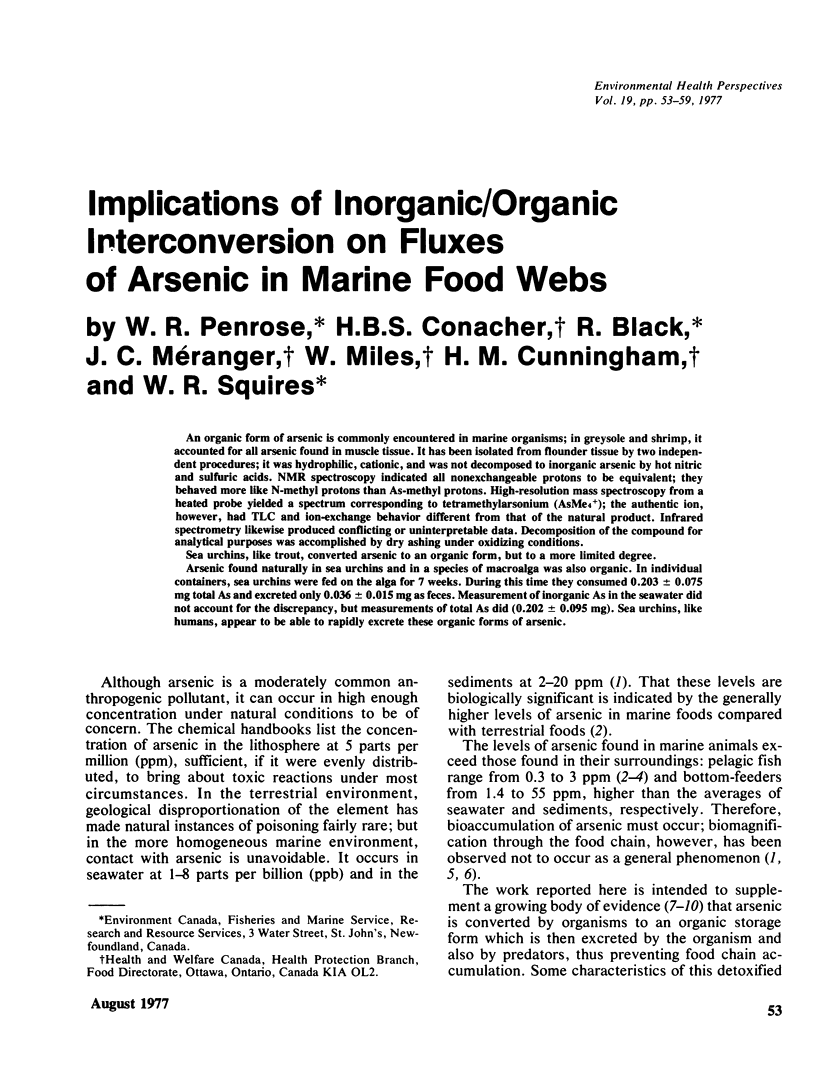
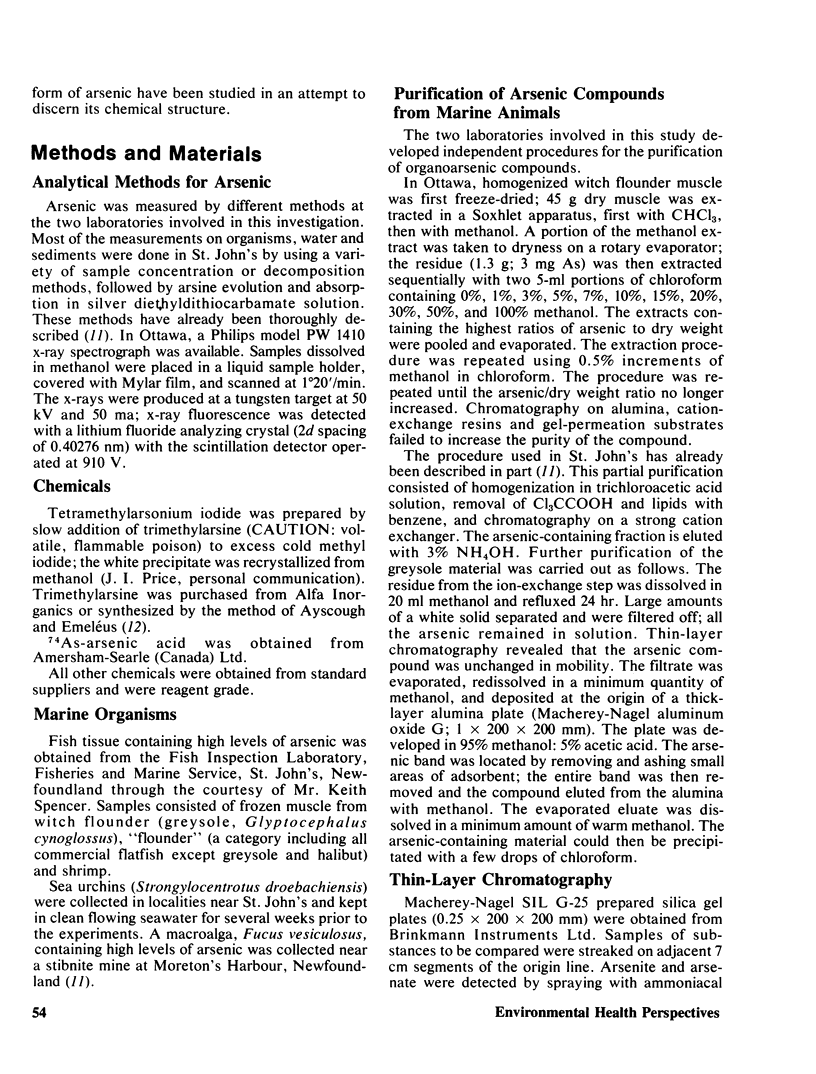
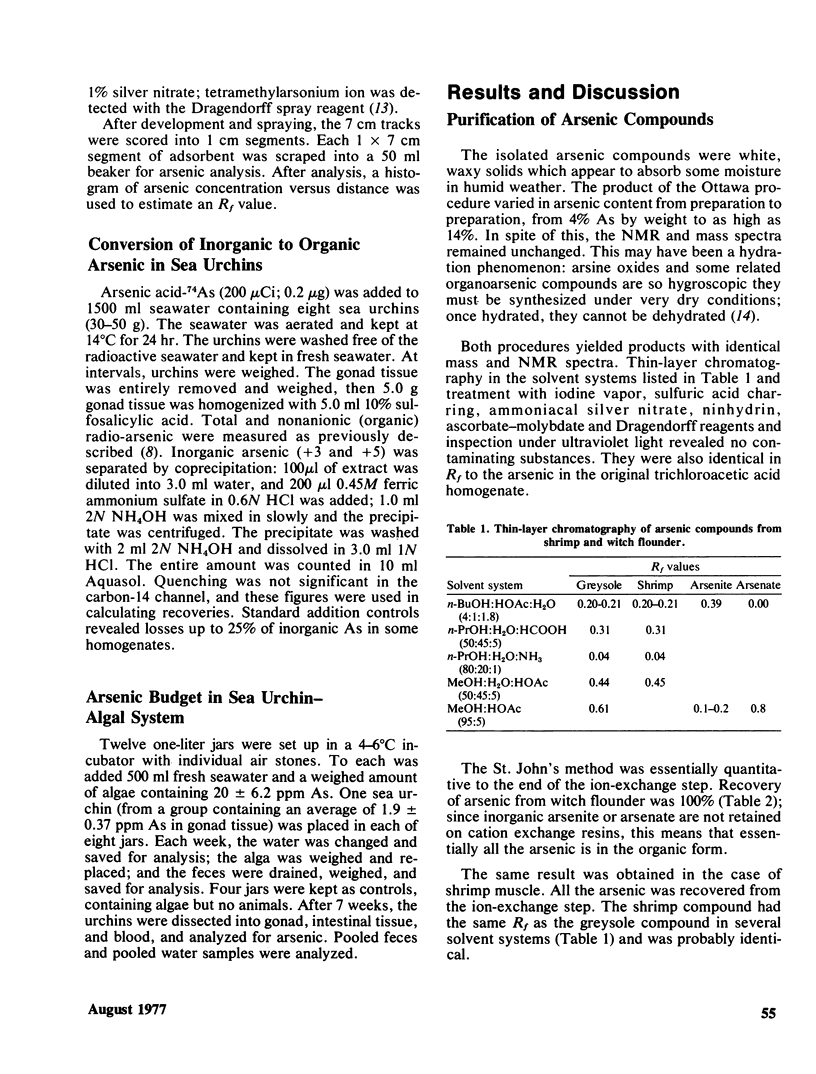
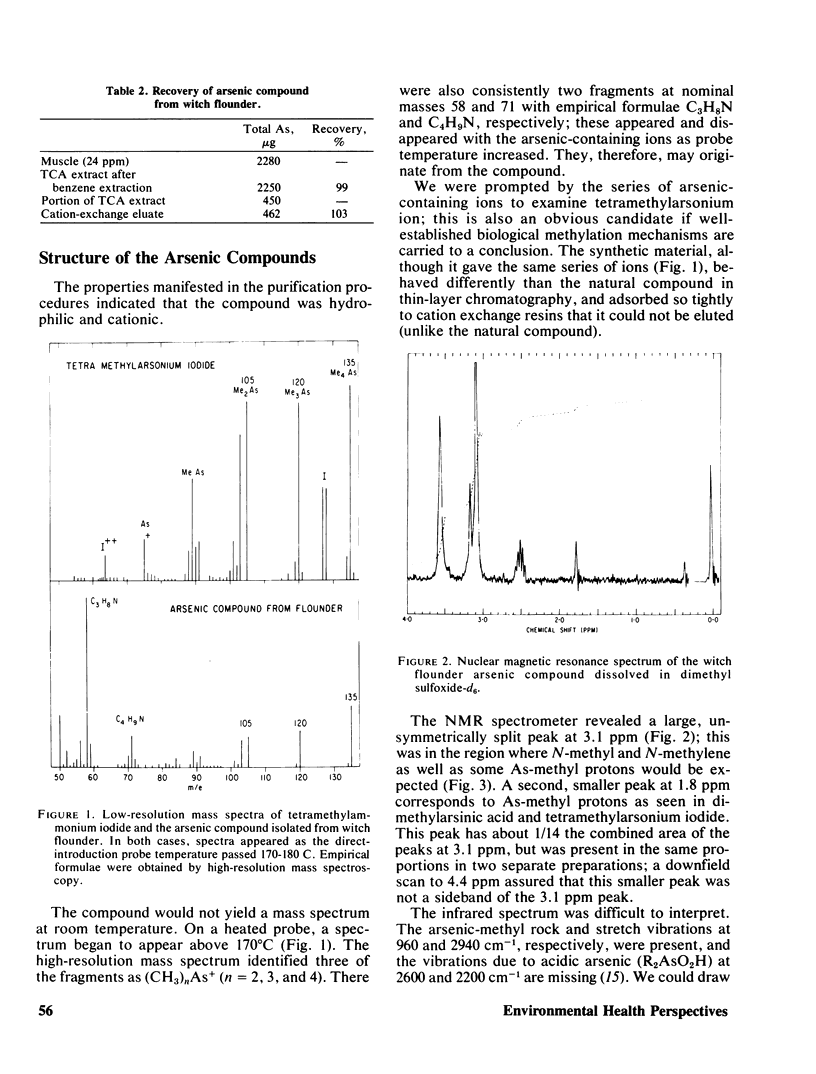
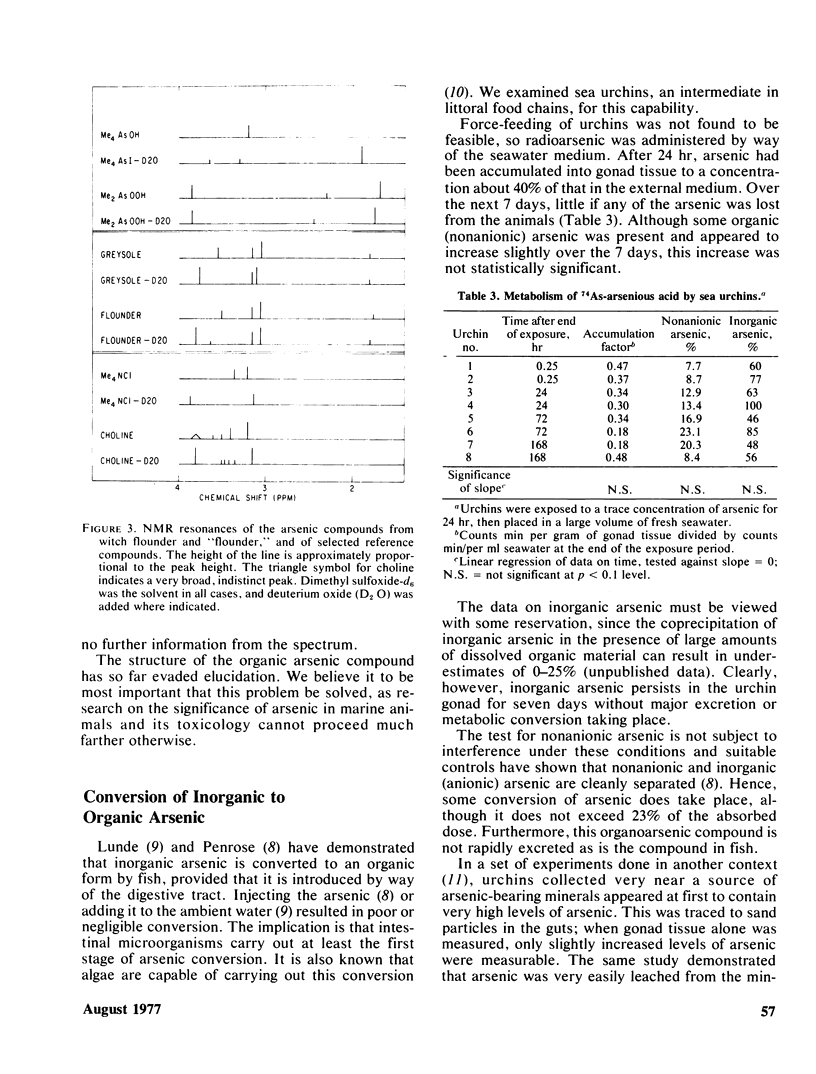
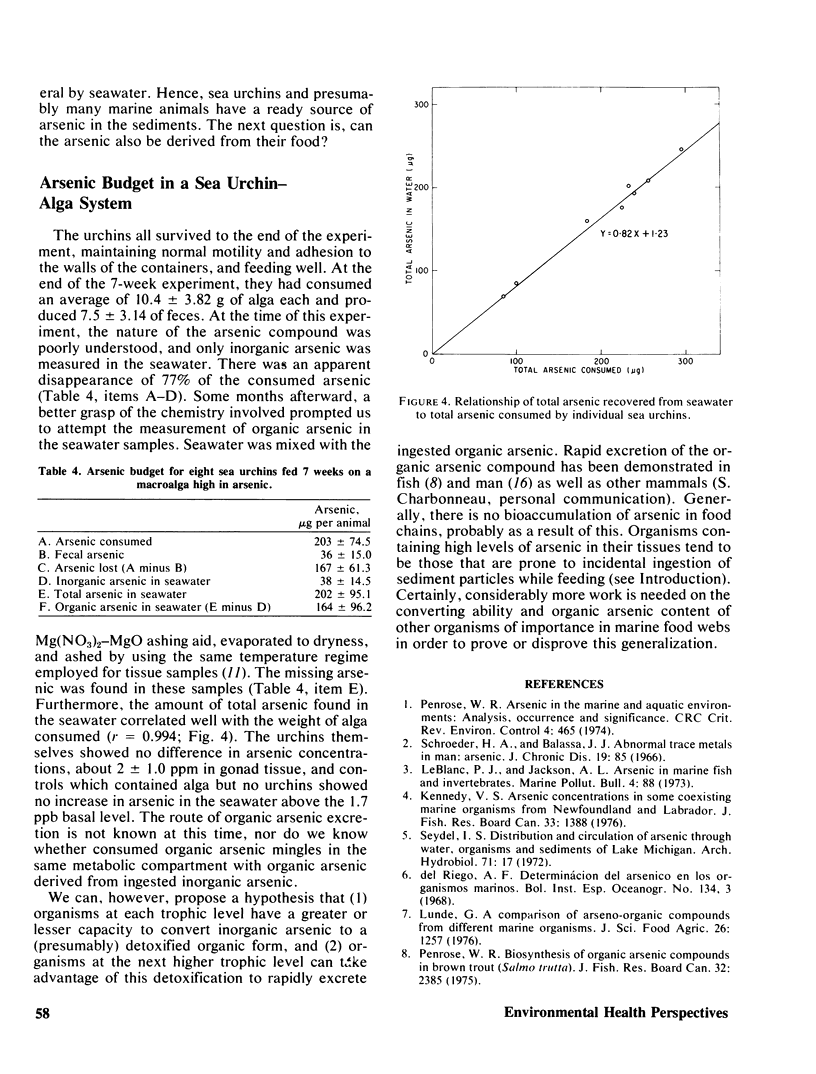
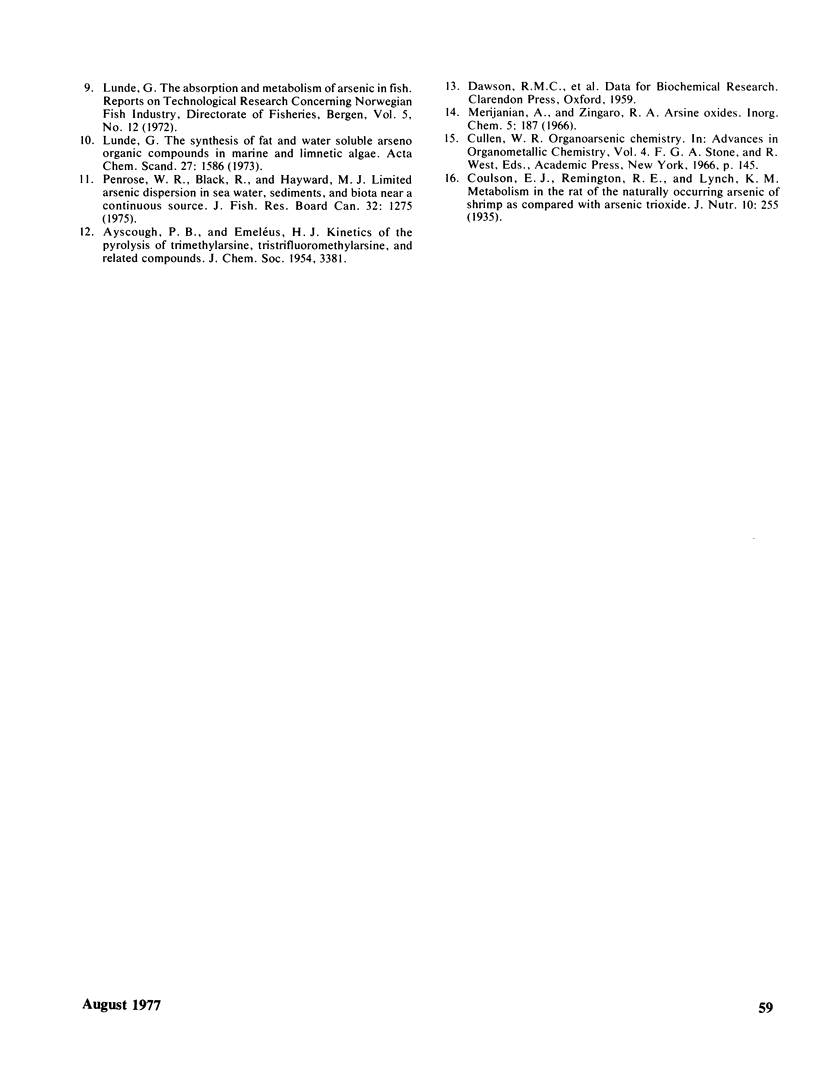
Selected References
These references are in PubMed. This may not be the complete list of references from this article.
- Lunde G. The synthesis of fat and water soluble arseno organic compounds in marine and limnetic algae. Acta Chem Scand. 1973;27(5):1586–1594. doi: 10.3891/acta.chem.scand.27-1586. [DOI] [PubMed] [Google Scholar]
- Schroeder H. A., Balassa J. J. Abnormal trace metals in man: arsenic. J Chronic Dis. 1966 Jan;19(1):85–106. doi: 10.1016/0021-9681(66)90152-4. [DOI] [PubMed] [Google Scholar]


